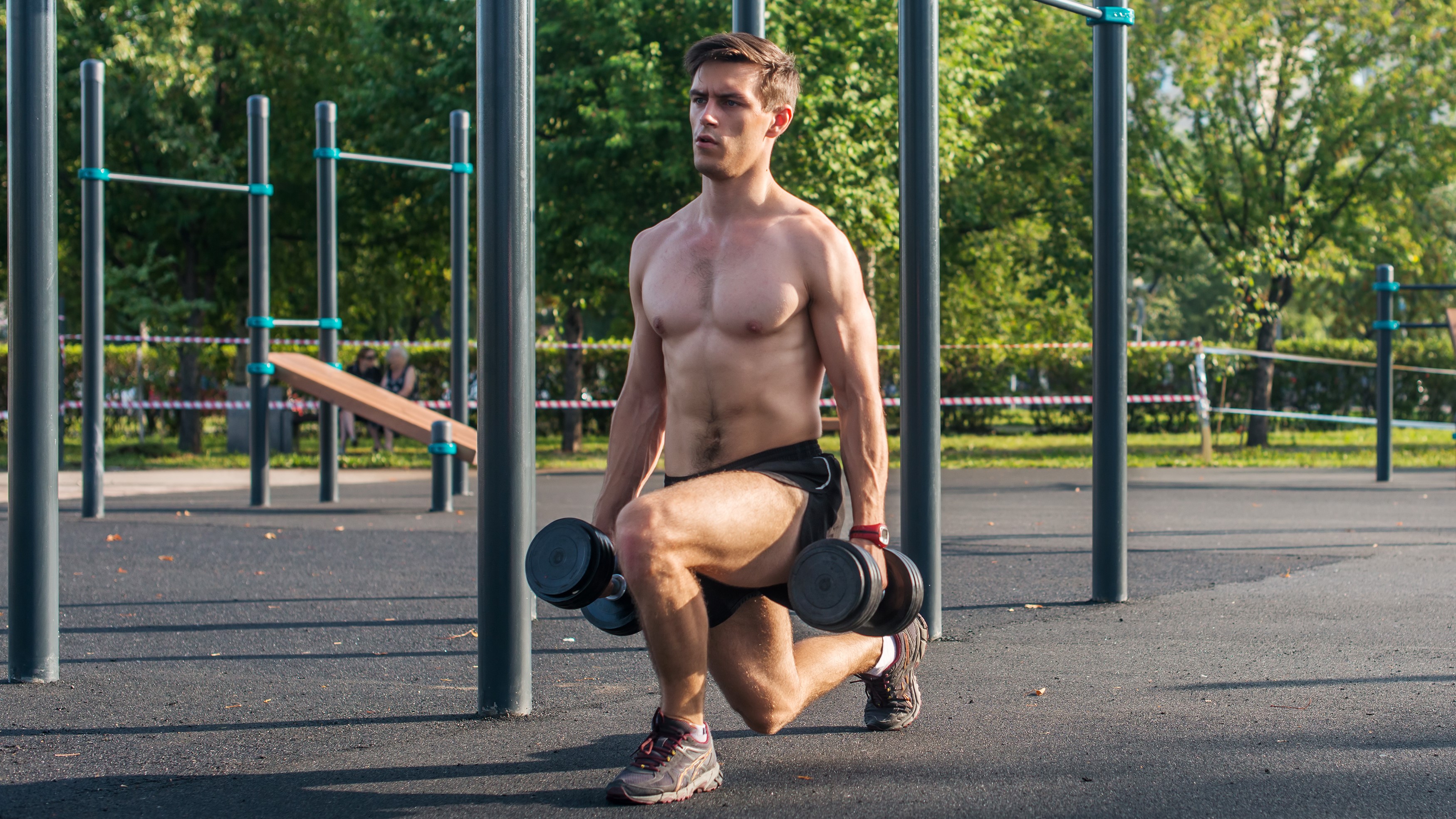How to do a lunge — form, benefits, and variations to try
They are better than squats at building your legs

If one of your exercise goals for 2022 is to build muscle and get stronger legs, chances are you’ve started by adding squats to your routine. While squats are a great lower body exercise and perfect for beginners, if you want to target your core, and work on your stabilization, it might be worth thinking about adding lunges to your routine.
While there’s no ‘best’ exercise for working your lower body, lunges target the hamstrings, calves, quads, and glutes, as well as the core. In fact, this study found that forward lunges activated the muscles in the legs better than bodyweight squats and leg presses did. Lunges can also improve your balance and stability, as they are unilateral movements, meaning that you’re working one leg at a time. This is important for most sports but is especially important for runners.
Want to know how to do a lunge, and the best modifications to try? Read on.
How to do a forward lunge
- To do a forward lunge, you’ll want to start at the end of your exercise mat (or yoga mat, we’ve found the best yoga mats for home workouts here) with your feet shoulder-width apart.
- Engage your glutes (squeeze them together) and brace your core as you step forward with your right or left foot, making sure your legs stay shoulder-width apart and your hips stay facing forward.
- Keeping your spine perpendicular to the floor, lower your body to the ground until both legs are at a 90-degree angle.
- The front knee should be over the front ankle, and your back knee should be underneath your hip. Press back from the front foot into your starting position and repeat the move on the other side.

How to make sure your form is correct
When it comes to doing lunges, proper form is imperative. If you feel off-balance, you might want to practice the lunge holding onto a chair, or wall. Make sure you keep your back straight for the entire exercise — don’t slouch or arch your back during the move.
You also need to ensure that you are stepping forward far enough to allow for the 90-degree bend in your front leg. You also want to make sure that your front knee isn’t collapsing inwards, or shooting out in front of your toes — you should still be able to see your toes in the lowest point of the movement.
Here’s how to do a forward lunge with the correct form:
What are the best lunge modifications to try?
If forward lunges feel too difficult, you can simply not lower down as far during front lunges, or switch to back lunges, which can be easier to master with the correct form. To do a back lunge, simply step your foot back behind your body, and bend on the front leg.
Sign up to get the BEST of Tom's Guide direct to your inbox.
Get instant access to breaking news, the hottest reviews, great deals and helpful tips.
If back lunges are too difficult, try high knee walks to work on your single-leg strength and balance. To do a high knee walk, walk 10, 20, or 30 yards, bringing your knee up to a 90-degree angle in front of your body before you step.
If you want to make your lunges more difficult, try holding a dumbbell in each hand as you lunge, or increasing the number of repetitions. Alternatively, why not try these lunge variations:
Curtsy lunge: To do a curtsy lunge, start with your feet shoulder-width apart, and step your right leg back behind your left leg. As you do so, bend your knees and lower your body down until your left thigh is parallel to the floor. Keep your torso straight for the entire exercise. Stand and return to your starting position before repeating on the other side.
Side lunge: To do a side lunge, stand with your feet hip-width apart, and take a big step out to the side on your left leg, keeping your right foot pressed into the floor. Bend your left (stepping) knee, lower until your left knee is almost at a 90-degree angle. Then push off from your left knee and return to the starting position before repeating on the right.
Static lunge: To do a static lunge, you remove the movement element and start in a wide stance, with one leg forward and the other back, still hip-width apart. Engaging your glutes and your core, bend both knees to 90-degrees, before returning to your starting position. That’s one rep.
Walking lunge: Finally, for a walking lunge, you continue moving after your first forward squat. Instead of pushing back to your starting position, you step your back leg forward, repeating the movement on the opposite leg.
Other exercises to try
For more workout inspiration, why not check out the best ab workouts you can do from just about anywhere, the arm exercise that can build muscle without weights, and one of the best ab exercises when it comes to sculpting a slimmer waistline. And for a different take on squats, trying the Bulgarian split squat can work your glutes and quads.
More from Tom's Guide

Jane McGuire is Tom's Guide's Fitness editor, which means she looks after everything fitness related - from running gear to yoga mats. An avid runner, Jane has tested and reviewed fitness products for the past five years, so knows what to look for when finding a good running watch or a pair of shorts with pockets big enough for your smartphone. When she's not pounding the pavements, you'll find Jane striding round the Surrey Hills, taking far too many photos of her puppy.
